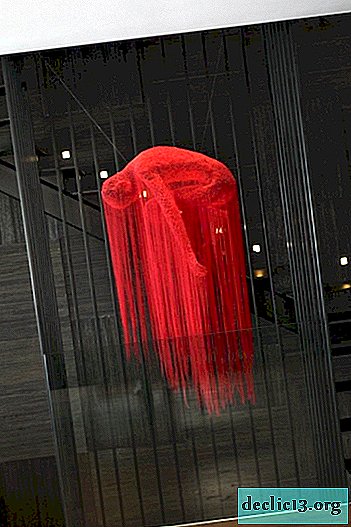How to choose paint for metal?
Today, there are a large number of various kinds of paints. Of course this is good, but how can one make a mistake in such a wide assortment? Let's figure it out. But before answering the question “How to choose paint for metal”, it is worth noting that there are only three of the most popular types:
- oil;
- alkyd;
- acrylic.
Epoxy enamels or paints based on silicone resins are rarely used in everyday life. They serve to protect metal structures from high temperatures, very toxic. Before choosing a paint for metal, it is necessary to pay attention to such characteristics as resistance to heat and adhesion to the surface (adhesion).
Oil and alkyd paint for metal
In oil paints, a drying agent acts as a binder, usually made on the basis of natural oils. These paints are good for interior work, but they are unlikely to be suitable for exterior (roof painting, etc.), since they do not withstand temperatures above 80 ° C. Oil paint quickly fades and cracks, poorly protects against rust. It’s not worth stopping your choice of metal paint. Alkyd paints and enamels cover galvanized metal. Of all types of paints, they have the greatest adhesion. Like oil, poorly withstand high temperatures, combustible.
Acrylic paint for metal
Acrylic paint for coating metals began to be used relatively recently. It perfectly protects against corrosion and is durable, does not fade and does not crack. It withstands temperatures of 120 ° C and can be used for coloring heating radiators. Unlike alkyd and oil, acrylic paint for metal is water-soluble, therefore it is non-toxic and non-combustible - it is used in explosive objects. The paint is ideal for indoor and outdoor use.
So, how to choose paint for metal?
The choice of paint for metal depends on whether the structure will be exposed to high temperatures. Alkyd and oil paints can withstand temperatures up to 80 ° C, acrylics are used for painting radiators, some types of alkyd and epoxy paints can withstand 120 C. The most heat-resistant polyurethane coatings (up to 150 ° C), epoxy-bitumen (up to 400 ° C), paints based on silicone resins (up to 600 ° C).
When painting the batteries, pay attention to the fact that the coating does not turn yellow when heated!
Non-toxic paints are oil and acrylic. Oily are poorly suited for external work due to their fragility. Alkyd paints are toxic, but quite popular, as they have a high degree of adhesion to the surface. Is it important to protect the structure from rust? If yes, then anti-corrosion primers and primer-enamels are suitable for these purposes. There are paints, primers and enamels for rust, not in the least inferior in quality to ordinary ones. It remains only to add that in everyday life the acrylic paint for metal holds the palm: durable, non-toxic and non-combustible.

















